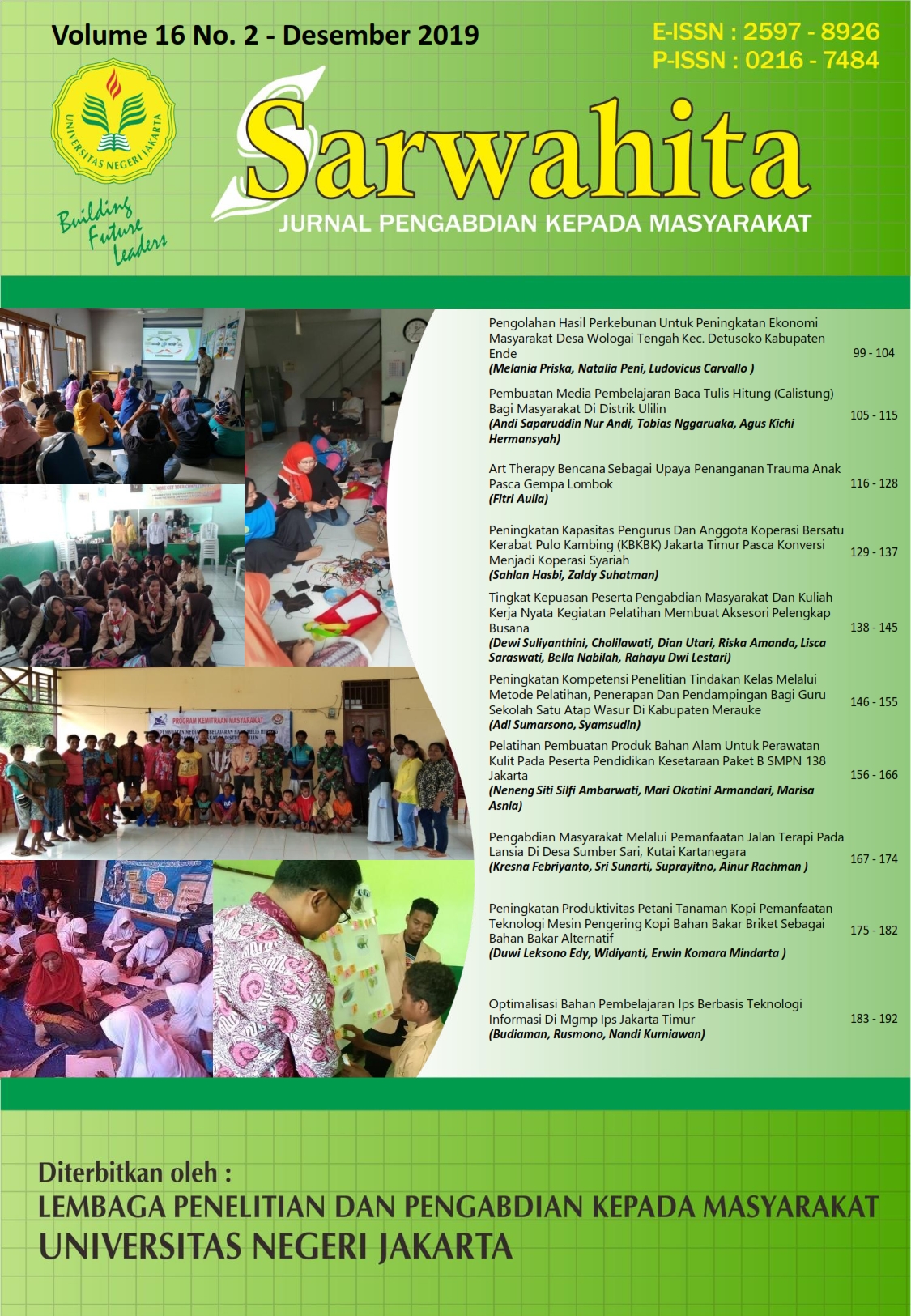ART THERAPY BENCANA SEBAGAI UPAYA PENANGANAN TRAUMA ANAK PASCA GEMPA LOMBOK
DOI:
https://doi.org/10.21009/sarwahita.162.03Keywords:
art therapy, child trauma, post-earthquake Lombok.Abstract
This activity aims to treat psychologically the victims of earthquakes in Lombok which occurred in mid-2018. The targets were chosen based on the location of the earthquake affected in severe status, namely in SDN 1 Sembalun. Children become important victims to be given care so as not to experience prolonged trauma. Art Therapy is the right method to be applied to children. The disaster art therapy carried out in this activity is, (1) Free drawing on the clouds. (2) Drawing feelings. (3) Free writing techniques. (4) Free storytelling techniques. Based on the results of the evaluation of activities it was found that children became calmer. It is expected that through this activity elementary teachers are able to have skills in overcoming students' anxiety and trauma in the event of aftershocks. First, post-earthquake trauma in children is easy to return to if aftershocks occur. Secondly, a continuous psychological assistance program is needed from all teachers and the community. Third, it is necessary to improve physical facilities and play environments in the community and schools.
Downloads
Published
Issue
Section
License
Copyright Notice
Penulis yang naskahnya diterbitkan menyetujui ketentuan sebagai berikut:
- Hak publikasi atas semua materi naskah jurnal yang diterbitkan/dipublikasikan dalam situs E-Journal Sarwahita : Jurnal Ilmiah Pengabdian kepada Masyarakat ini dipegang oleh dewan redaksi dengan sepengetahuan penulis (hak moral tetap milik penulis naskah).
- Ketentuan legal formal untuk akses artikel digital jurnal elektronik ini tunduk pada ketentuan lisensi Creative Commons Attribution-ShareAlike (CC BY-SA), yang berarti Sarwahita : Jurnal Pengabdian kepada Masyarakat berhak menyimpan, mengalih media/format-kan, mengelola dalam bentuk pangkalan data (database), merawat, dan mempublikasikan artikel tanpa meminta izin dari Penulis selama tetap mencantumkan nama Penulis sebagai pemilik Hak Cipta.
- Naskah yang diterbitkan/dipublikasikan secara cetak dan elektronik bersifat open access untuk tujuan pendidikan, penelitian, dan perpustakaan. Selain tujuan tersebut, dewan redaksi tidak bertanggung jawab atas pelanggaran terhadap hukum hak cipta.









